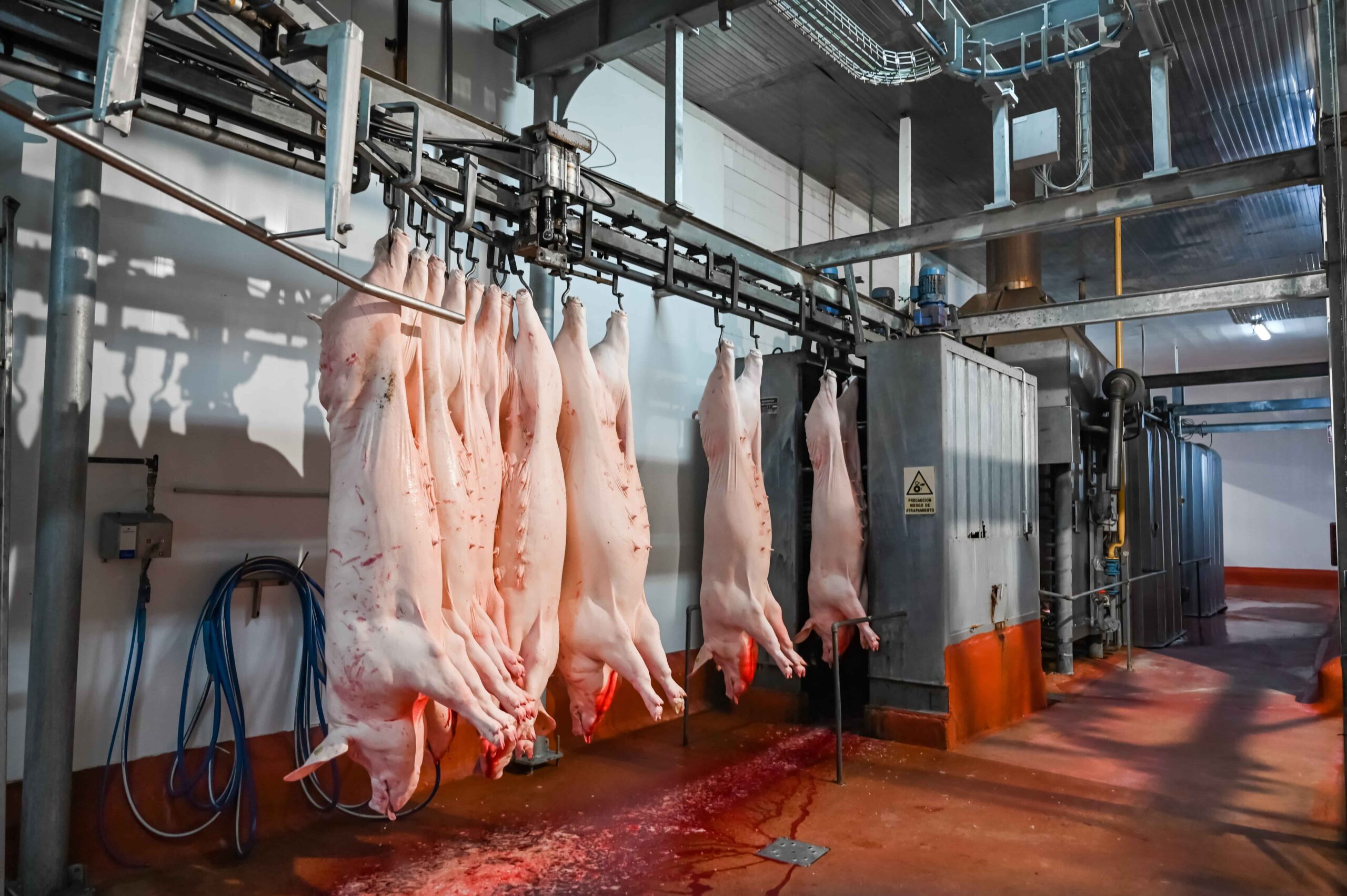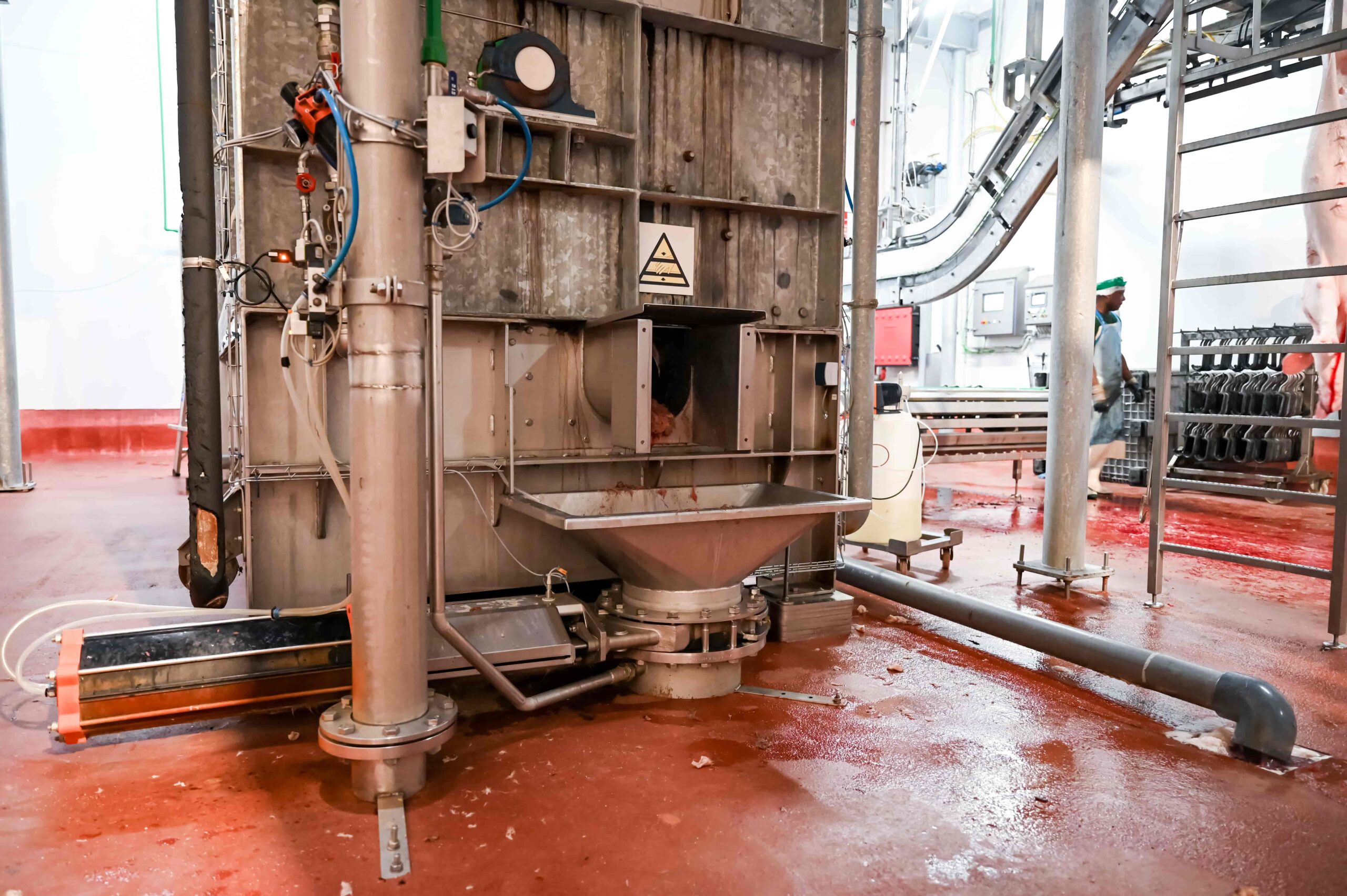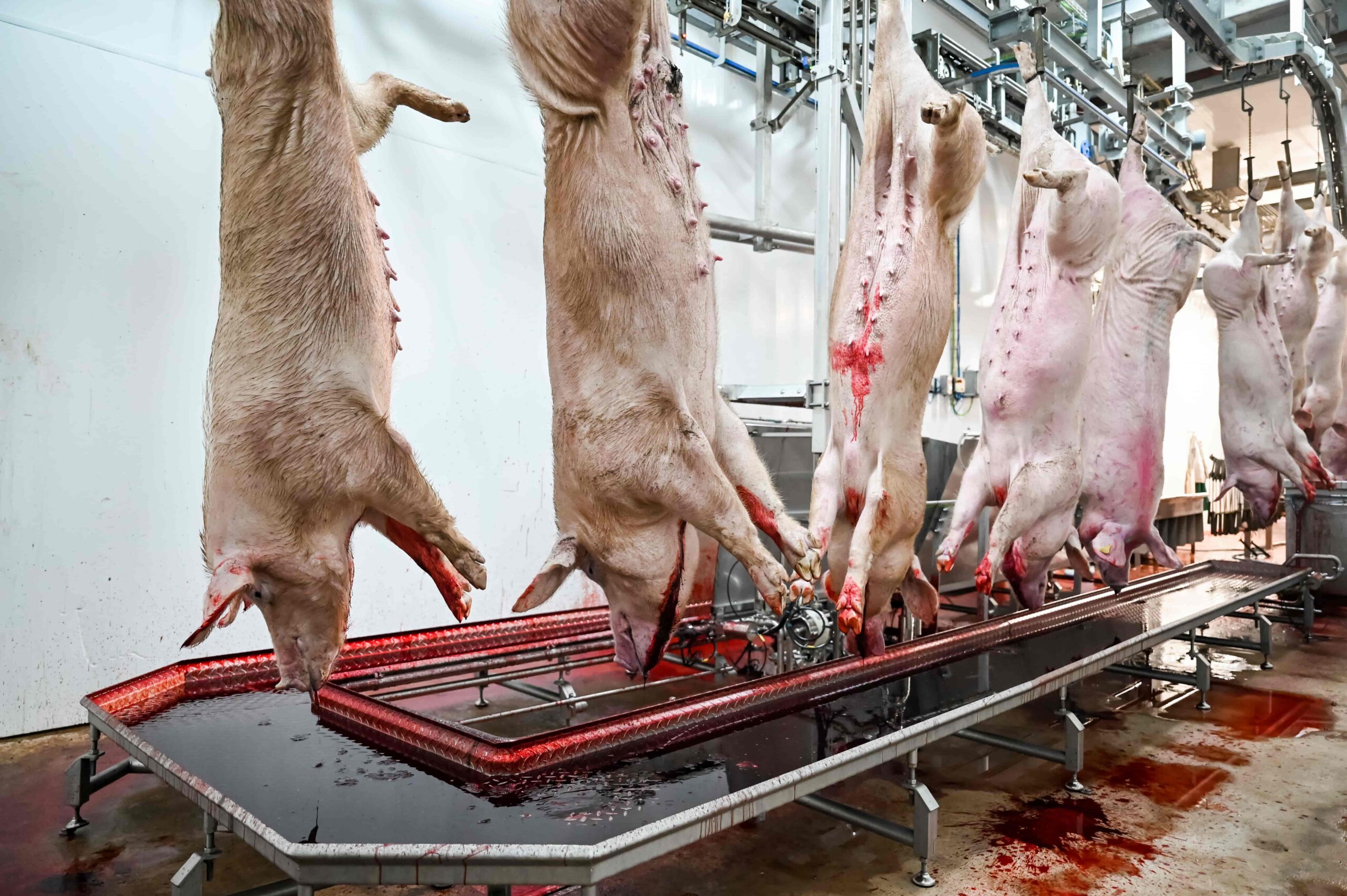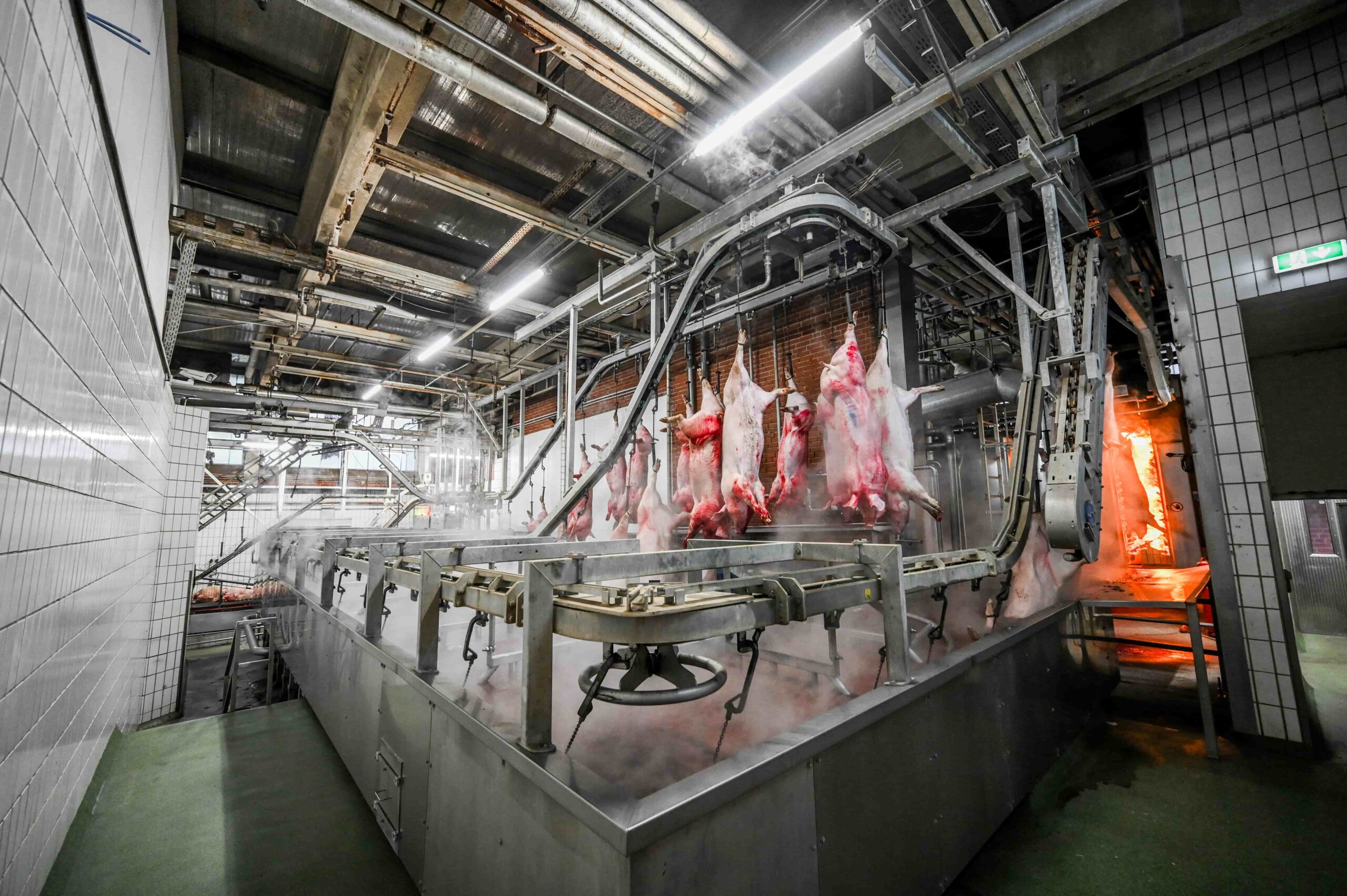Machine line
In the last part of unclean slaughter, we find the machine line. Here, the pigs are dehaired and washed to prepare them for clean slaughter. At DGS, we offer pre-dry machines, flaming and decontamination furnaces, washing machines and conveyor systems.
Dry & pre-polishing
Before entering the scalding tank, the carcass can be pre-polished. Whips and brushes are used to remove dirt from the carcass, reducing the soiling of the scalding tank water. When this machine is placed in front of the flame furnace, it is called dry-polishing. Here, the carcass is whipped dry before entering the flaming furnace.
Dehairing
After scalding, the carcasses slide through a chute into the dehairing machine. In a shaft with scraper blocks the animal rotates, dehairing it. Meanwhile, water is sprayed on the carcass. This enhances the hair removal and at the same time washes away the loosened hair. The spray water is collected, then reheated and pumped back to the nozzles using a pump. The loosened hairs come to be sieved and continuously disposed of.
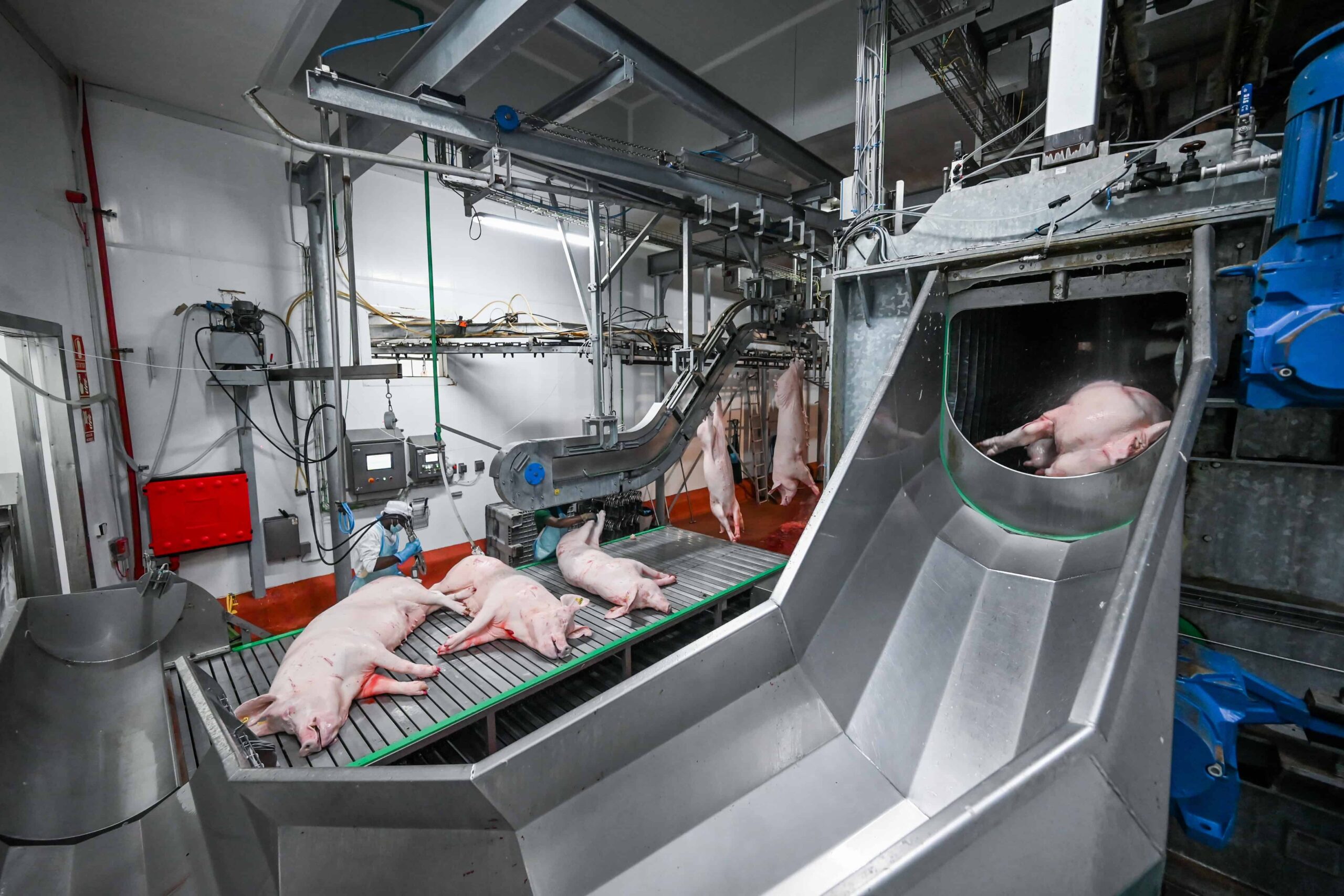
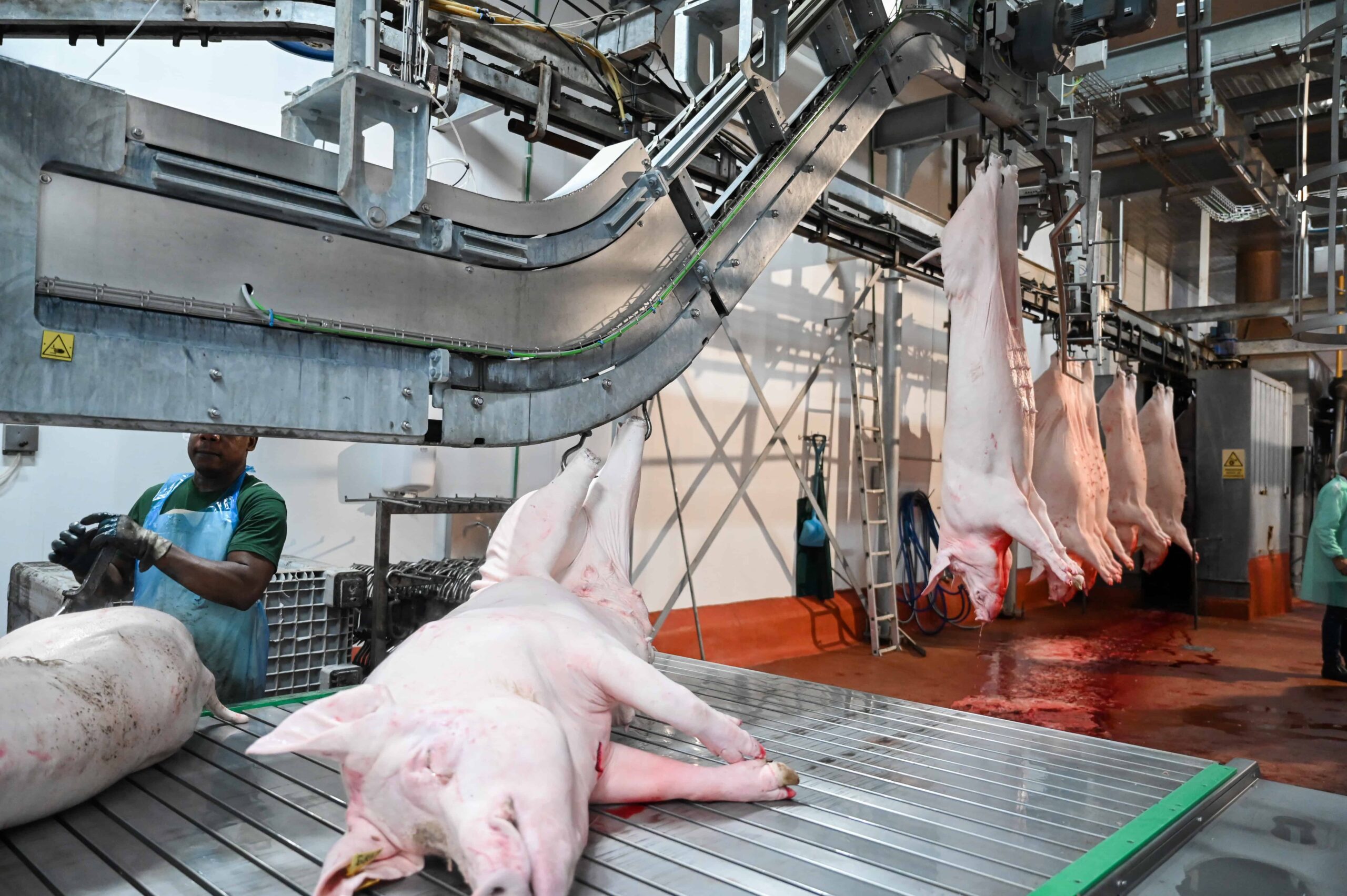
Gambrelling table
The most important part of the moving top table is the stainless steel slat belt, placed at an ergonomic height for the operators. On the gambrelling table, the gambrels are inserted into the hind legs, after which the carcasses are hung on an elevator. Due to its stainless steel design the table is easy to clean.
Flame & decontamination furnace
After the carcass has been dry-polished, the flame furnace removes the remaining fine hairs left by briefly exposing the carcass to open flames. The furnace can also be placed as the very last step in the machine line to burn away any remaining bacterial growth. In that case we speak of a decontamination furnace.
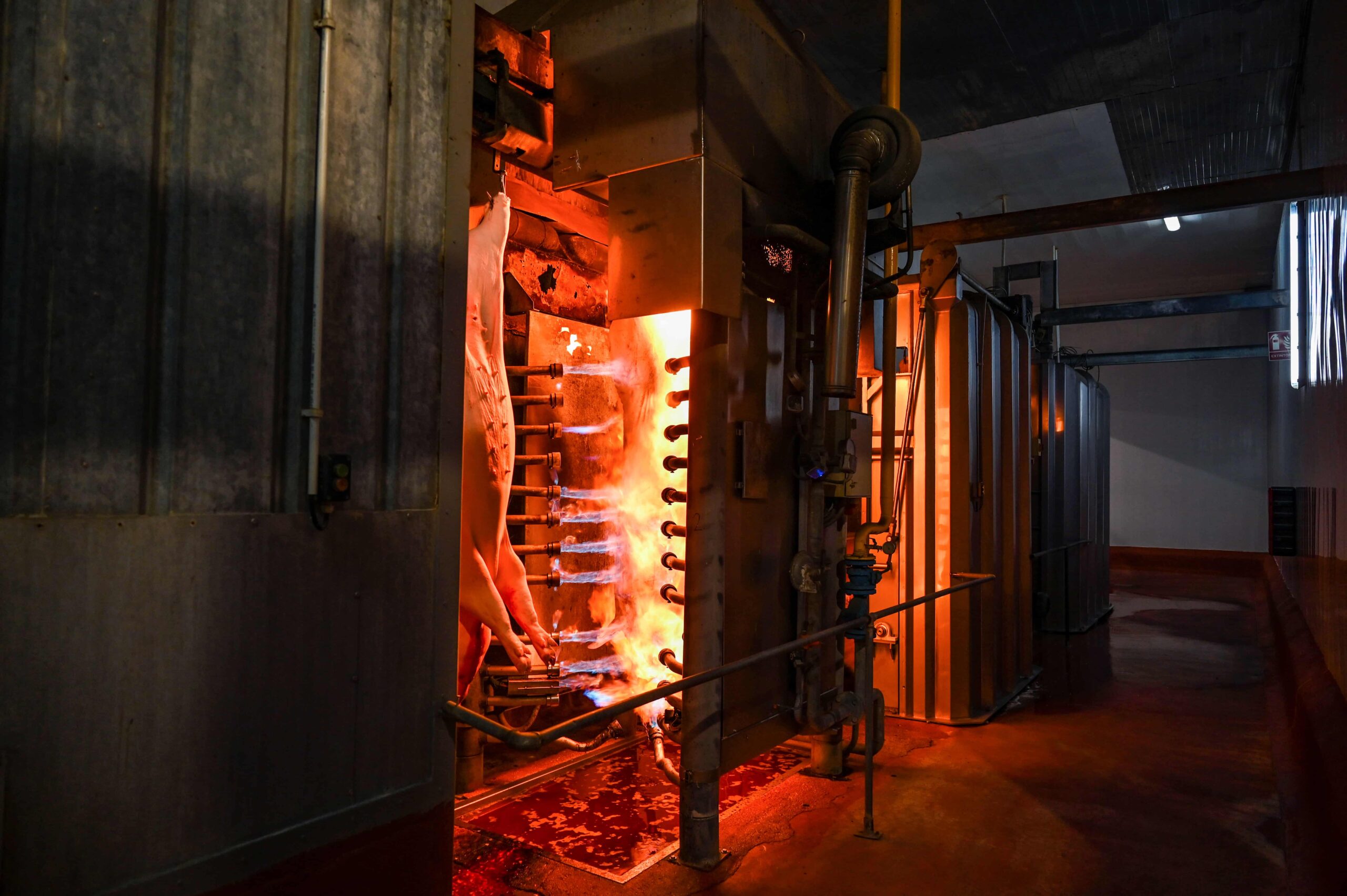
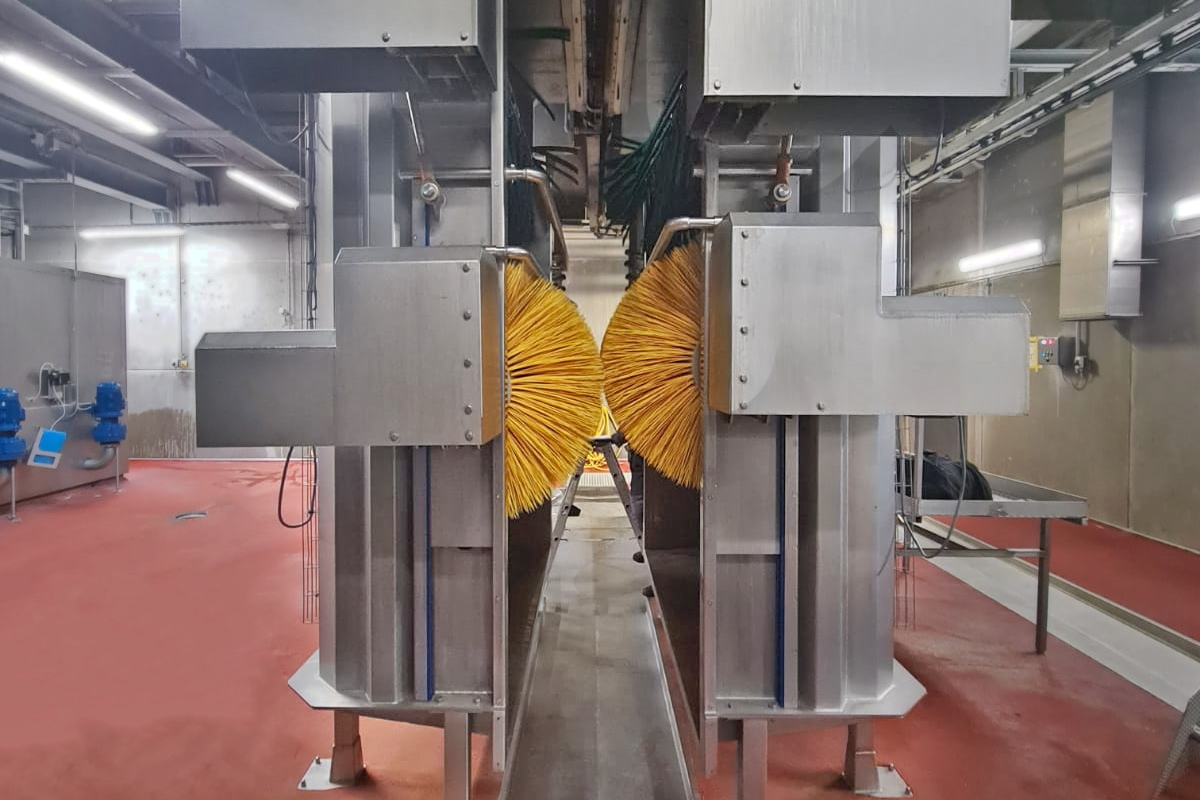
Washing
After dehairing and flaming , the washer cleans and polishes the surface of the carcass. The combination of horizontally and vertically positioned whip rollers ensures optimum cleaning of head and forelegs. A thin stream of water cleans the machine internally during the washing process, minimising bacterial growth.
